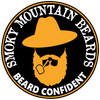You have no items in your shopping cart.
By definition, the texture of hair describes the diameter of each shaft of hair. If your hair is very wide in diameter, it is considered coarse. If your hair is very thin in diameter, it is considered fine. Hair that falls somewhere in between the two is considered medium.
Despite the textbook definition of the term, most people who talk about beard texture are talking about the way a beard looks. A big part of Beard Confidence is setting goals and reaching them. Understanding all of the unique characteristics of your beard can help you in two ways. First, you’ll be able to build a beard care routine that is perfectly suited to every aspect of your hair. Second, you’ll be able to set realistic beard goals and surpass them.
These are the characteristics of hair that help determine the way your beard looks, fields, and needs to be cared for.
Understanding Beard Curl Patterns
Beards can be curly, coily, wavy, straight, or a mixture of all of those. Staighter textures often appear longer than curlier textures. Curlier textures often appear to be a little fuller than straighter textures.
If your beard is straight, you will notice increases in lenght much quicker. The curls and coils of a curly beard reduce visible length. Depending on the density and color of your hair, your straight beard may appear to be a little thinner than it is. Different lengths at different sections of your beard may be more noticeable, contributing to a more wiry look.
Beards with more texture need oil more often than beards that fall on the straighter end of the spectrum. Sebum from the roots of the hair is nature’s answer to a great conditioner. Gravity helps the sebum glide down close to the tips of the shafts of straight hair. Curly and coily hair has more surface area, and gravity doesn’t take the sebum down as far.
Beard Curl Pattern Styling Tips
Applying products and combing your hair can stretch out a curly beard. When you put water on a curly or coily beard, it is perfectly natural for it to shrink up a little as the water causes the hair to curl up truest to its natural pattern.
When it comes to detangling, a good wooden beard comb is the best choice for a straight beard. The thinner spacing of the teeth of a comb helps to untangle all the fine knots. For a curlier beard, a good boar bristle brush ofen works better. This can due a much better job of getting in between all of the curls.
Beard Density
When it comes to hair and density, think of it like trees on an acre of land. Two identical acres may have 100 trees. If the trees on one acre are all close together, it may look more densely wooded than the other acre where those same 100 trees are spaced apart.
You may have as much beard hair as the next guy, but your beard will look different if your hair is not as dense. Beard density is completely genetic. It just has to do with the pattern in which your hair grows out of your chin. It’s not something you can change, and it has nothing to do with your beard maintenance routine.
The way your beard looks depends, not just on whether it is curly or straight, but on all of the characteristics that make up each hair follicle. Some portions of your beard may be dense while others are sparse. Your sideburn might be coarse, and your mustache may be fine. Beards are super unique.
So, does beard texture matter? Not nearly as much as you’d think it would. Texture, curl pattern, and density are all just facts about the way your hair grows naturally. None of the possibilities for theses characteristics of beards are better or worse than others. When you understand the characteristics of your beard, you can car for it better.

